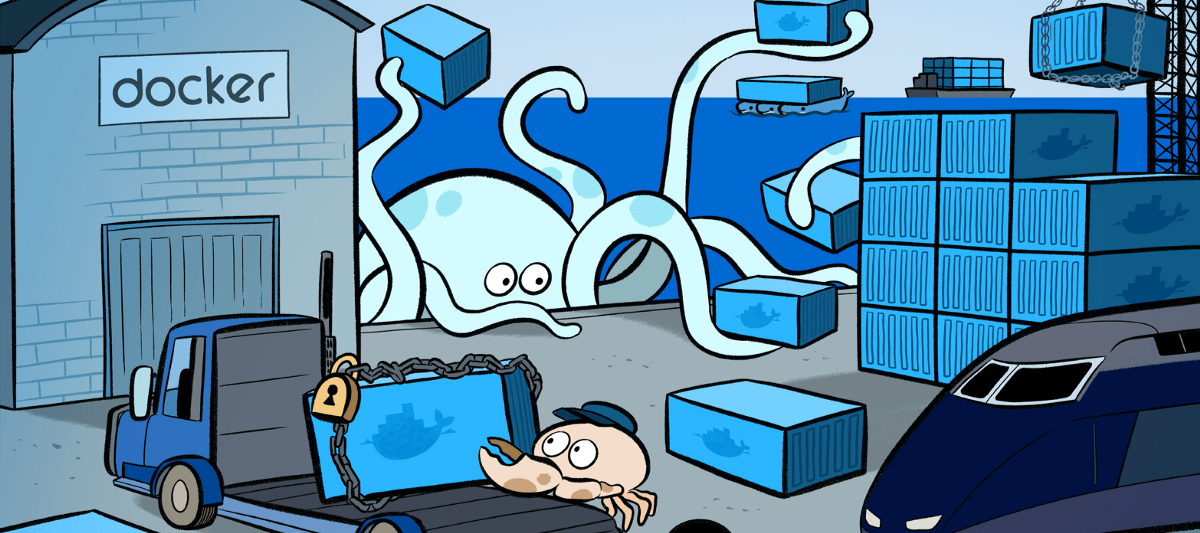Day 19 :- Docker for DevOps Engineer.
 yogesh Rai
yogesh Rai
Title: Mastering Docker Compose: Orchestrating Multi-Container Applications with Efficient Data Sharing
Introduction: Containerization has revolutionized the way software applications are developed, deployed, and managed. Docker, one of the leading containerization platforms, has gained widespread adoption due to its simplicity, portability, and scalability. Docker Compose, an essential component of the Docker ecosystem, simplifies the orchestration of multi-container applications, enabling developers to define complex environments with ease. In this comprehensive guide, we will explore Docker Compose in depth, focusing on its capabilities for orchestrating multi-container applications and facilitating efficient data sharing through Docker Volumes and Named Volumes.
Part 1: Docker Compose Essentials Docker Compose is a tool that allows developers to define and manage multi-container Docker applications using a simple YAML file. This section will cover the essential concepts and commands for working with Docker Compose:
Defining Services: Docker Compose enables developers to define the services that make up their application, including container images, ports, volumes, environment variables, and dependencies.
Managing Dependencies: Docker Compose automatically manages dependencies between services, ensuring that containers are started in the correct order and that communication between services is established seamlessly.
Orchestrating Deployment: With Docker Compose, developers can easily bring up and bring down their multi-container applications using simple commands such as
docker-compose upanddocker-compose down.Scaling Services: Docker Compose allows developers to scale individual services by specifying the number of replicas, enabling horizontal scaling for improved performance and resilience.
Monitoring and Logging: Docker Compose provides built-in commands for monitoring the status of containers (
docker-compose ps) and viewing container logs (docker-compose logs), simplifying troubleshooting and debugging.
Part 2: Efficient Data Sharing with Docker Volumes Persistent storage is essential for many applications, particularly those involving databases, file systems, or other forms of data storage. Docker Volumes provide a flexible and efficient solution for managing persistent data in Docker containers. This section will explore the following aspects of Docker Volumes:
Introduction to Docker Volumes: Docker Volumes are separate storage areas that can be accessed by containers, allowing data to persist beyond the lifecycle of individual containers.
Creating Docker Volumes: Developers can create Docker Volumes using the
docker volume createcommand, specifying options such as volume name, driver, and mount point.Mounting Volumes in Containers: Docker Volumes can be mounted in containers using the
--mountflag or thevolumessection in Docker Compose files, enabling containers to read from and write to shared data volumes.Named Volumes vs. Bind Mounts: Docker supports two types of volumes: Named Volumes and Bind Mounts. Named Volumes are managed by Docker and provide better isolation and management, while Bind Mounts offer flexibility but require manual management.
Data Consistency and Integrity: Docker Volumes ensure data consistency and integrity by providing a reliable mechanism for sharing data between containers, even when containers are stopped, restarted, or scaled.
Part 3: Practical Examples and Best Practices In this section, we will walk through practical examples of using Docker Compose and Docker Volumes to orchestrate multi-container applications and share data efficiently. Topics covered include:
Building a Multi-Container Application: We will create a Docker Compose file that defines a multi-container application consisting of an application container and a database container. We will explore how to define services, configure networking, and manage dependencies between containers.
Sharing Data Between Containers: Using Docker Volumes, we will demonstrate how to share data between containers in a multi-container application. We will mount volumes in containers and verify data consistency across containers using Docker commands.
Optimizing Resource Utilization: We will discuss best practices for optimizing resource utilization when working with Docker Volumes, including volume management, cleanup, and monitoring.
Conclusion Docker Compose and Docker Volumes are powerful tools for orchestrating multi-container applications and managing persistent data in Docker environments. By mastering these tools and adopting best practices for containerization and data management, developers can streamline the development, deployment, and management of modern applications. With Docker's flexibility, portability, and scalability, the possibilities for building innovative and resilient applications are limitless.
Stay tuned for more Docker-related insights, tutorials, and best practices as we continue to explore the exciting world of containerization and microservices architecture!
Subscribe to my newsletter
Read articles from yogesh Rai directly inside your inbox. Subscribe to the newsletter, and don't miss out.
Written by
